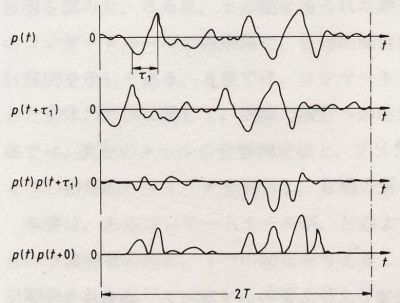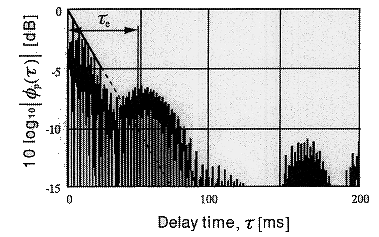| Japanese | English |
1. Introduction
Sound is a variation of the air pressure transmitted from a sound source.
The pressure variation can be expressed as a waveform. Sound is transmitted
with progress of time. If time does not exist, we cannot hear sound. Please keep in mind that the
ACF is a useful tool by which we can investigate
sound in the time domain.
2. Time domain and frequency domain of sound
There are two methods of describing sound. One is the method in the time
domain ("waveform" or "ACF", as functions of time). The
other is the method in the frequency domain ("spectrum" as a function
of frequency). These two methods describe a same sound from different points of
view, and
the conversion from each other is possible. That is, although sound can be
similarly described effectively whichever we use, one of methods is more convenient
than another in some situation. For example, you often see the bar graph
(graphic equalizer) in a component stereo. It shows the frequency distribution
of sound. You can grasp easily that how much amount of low-pitched sound
or high-pitched sound is contained. In contrast, the ACF analysis that we offer
is effective in order to focus on the temporal information of sound such as
periodicity or sudden transition.
3. The relation between sound and our brain
The sound coming into the ear progresses along a hearing pathway, and is
perceived with the passage of time. At this time, the meaning of the sound is
interpreted by our brain at every moment. Here is the importance of analyzing
sound in time domain. Except that the ACF describes the sound in time domain,
the same mathematical information is expressed in the power spectrum. However,
the ACF analysis differs from the spectrum analysis greatly in that the
higher-level processes in our auditory brain are taken into consideration. If
you are interested in the neural mechanism of analyzing sound by use of the ACF,
visit cariani.com to see
the latest research topics.
4. What is autocorrelation function?
Autocorrelation function (ACF) is defined by the following formula.

As shown in Fig. 1, let's consider the signal p(t) and its delayed version p(t+t).
If the amplitude of p (t) and p (t+t)
is large, and two signals are similar, the correlation value of two signals,
Fp(t)
becomes large. So, it can be said that the ACF is the function that shows
how much similarity is included in the signal itself. The ACF is a useful tool
in the signal analysis because it can be used to detect the periodicity of the
signal. Below, the examples of the ACF for
music and noise are shown.
| Music |
|
|
| Noise |
|
|

(3) Time delay of the maximum peak: t1
This corresponds to the pitch of sound.
(4) Amplitude of the maximum peak: f1
This corresponds to the pitch strength of sound.